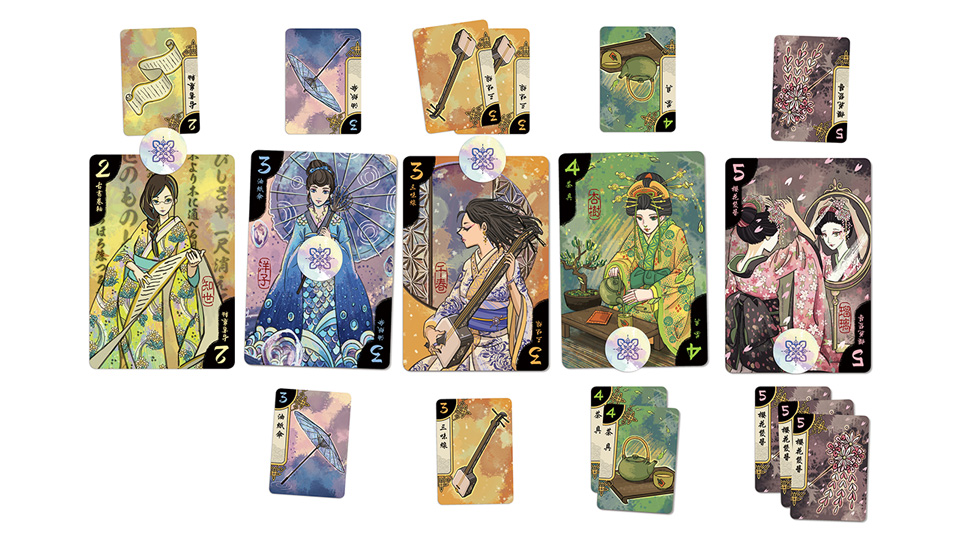Donut Shop is a light-ish new game from 25th Century Games and Jeffrey D. Allers, designer of New York Slice and Heartland/Gunkimono, blending some set collection and tile-laying mechanics into a game with a short rule set but too long and amorphous a playing experience. It definitely looked more promising before it came out of the box.
In Donut Shop, players add 2×2 tiles to a common tableau to try to create patterns they can score by covering them with donut boxes that range in size from 4 to 12 donuts. There are five flavors, each of which can have sprinkles or some other decoration on them, as well as ‘wild’ spaces that show a little pile of five donut holes. On your turn, you must place the one tile in your hand fully adjacent to another tile on the tableau – at least one edge must fully line up with the edge of a single tile already on the table – and then choose one donut flavor to score. You get 10 cents for each donut of that flavor on your tile, plus 10 more cents for each matching donut orthogonally adjacent to the tile AND each matching donut adjacent to those.
At this point, you can end your turn, or you can take a donut box from the supply to cover part of the tableau as long as you have the correct cards to do so. The cards represent customer orders, and you must have one card for every flavor of donut you’re covering with the box – one card can cover as many donuts of one flavor as you need, although you may choose to play additional cards for more rewards. You get a fixed value for the box, plus an additional 10 cents if any of your cards show a sprinkles bonus on the bottom and you covered a donut matching that flavor that also has sprinkles. There are also coffee bonuses independent of donut flavors; if you trade in two coffee cards with one box, you get 15 cents, and if you trade in three you get 25 cents.
At the end of your turn, you must take a new donut tile and a new order card. You can do this in any order, as long as the first item you take is face-up, so the second is face-down. You may only have one tile at a time, but there is no limit on order cards. The game continues until the players either exhaust the donut tile supply or the order card supply.
There are two major issues with Donut Shop that ended up souring me on the game. The bigger one is its length: It takes way too long to get to the end of the game, by which point the very simple mechanics become rote and uninteresting. This game needs to be about half as long as it is, given the short rules and the overall theme, and when I played it with my seven-year-old and when my 11-year-old played with two friends, we all agreed it needed to end sooner – the second group didn’t even play till the conclusion.
I also don’t like how hard it is to set up any moves even a turn in advance. If you try to build towards a larger box, nothing can stop your opponent from just grabbing the space once they have the cards, and that’s really easy to do later in the game when both players will likely have a decent supply of order cards on hand at all times. In addition, while the supply of donut boxes is limited, but in a two-player game there are too many smaller boxes, so you have a very strong incentive to fill small orders early until those boxes start to run short, which feels very paint-by-numbers rather than strategic. It doesn’t penalize long-term planning, but it fails to reward it.
There might be a better game in here somewhere, even a smaller-box game, maybe if you weren’t all building the same tableau or were competing more directly for tiles and cards – if I could see you needed a tile and might take that first, that would be a different game but increase the interaction without it being as simple as “I’m covering the donuts you were going to cover next turn.” I also don’t think the 20-40 minute listed playing time is accurate – we had a two-player game run at least 45 minutes because it just takes too long to get through the supply, so perhaps an earlier end condition would help. I love tile-laying games but this one doesn’t hit any of the reasons I enjoy them.

